Reconstruction 9.2 (2009)
Return to Contents>>
The Nabakov Riddle / Dmitry Sokolenko
The Russian language was the language of the Writer’s heart, English was the language of his mind, while French appealed to his ear. I was guided by this when I worked on the montage below.
When we concentrate on a material object, whatever its situation, very act of attention may lead to our involuntarily sinking into the history of that object. Novices must learn to skim over matter if they want matter to stay at the exact level of the moment. Transparent things, through which the past shines!
Transparent Things
I follow VN’s lead and concentrate on surrounding objects. Natura in minimis maxima. How big is the role that small objects (or circumstances) play in the nature of our successes and failures! My goal is to show the objects, their inherent transparency and the transparency of their meanings that the Writer shares with us.
Antonie van Leeuwenhoek (1632-1723) invented and first used the prototype microscope three and a half centuries ago. The scientist was drawn to the fascinating diversity of the “world of small beasts unseen by eye.” of the “animacules.” Finally he could satisfy his curiosity with the help of this useful and beautiful apparatus. The same curiosity draws me to the work of the Writer who himself deftly used microscopic means in his entomological studies.
All the images of the Nabokov Riddle are made with the use of different microscopes. Or, to put in a different way, the 21st century supplied me with a quill that uses light instead of ink. And it is in this century that the quill of light becomes an artist’s literary instrument.
The first glimpse of a visual decoding of VN’s work appeared before me on a March morning in the Library of Congress in Washington and it was on a November evening near the nykytaiteen museo KIASMA in Helsinki that the stream of consciousness stopped.
My objects are dead butterflies that smell of mothballs, lit by a halogen or a xenon lamp – the butterflies collected by the Writer in the 1940s and 50s. On the butterfly wings the figures of an old game move, the game that can transform the surrounding world into the 8x8 matrix which gives us new freedoms. These are not the conventional butterflies that flutter on some painters’ canvases lit by a conventional sun. VN turns out to be a Writer of the Future...
| From the age of seven, everything I felt in connection with a rectangle of framed sunlight was dominated by a single passion. If my first glance of the morning was for the sun, my first thought was for the butterflies it would engender. The original event had been banal enough. On the honeysuckle, overhanging the carved back of a bench just opposite the main entrance, my guiding angel (whose wings, except for the absence of a Florentine limbus, resemble those of Fra Angelico’s Gabriel) pointed out to me a rare visitor, a splendid, pale-yellow creature with black blotches, blue crenels, and a cinnabar eyespot above each chrome-rimmed black tail. As it probed the inclined flower from which it hung, its powdery body slightly bent, it kept restlessly jerking its great wings, and my desire for it was one of the most intense I have ever experienced. Agile Ustin, our town-house janitor, who for a comic reason (explained elsewhere) happened to be that summer in the country was transferred, cap and all, to a wardrobe, where domestic overnight. On the following morning, however, when the tail, with a mighty rustle, flew into her face, then made for the open window, and presently was but a golden fleck dipping and dodging and soaring eastward, over timber and tundra, to Vologda, Viatka and Perm, and beyond the gaunt Ural range to Yakutsk and Verkhne Kolomsk, and from Verkhne Kolomsk, where it lost a tail, to the fair Island of St. Lawrence, and across Alaska to Dawson, and southward along the Rocky Mountains – to be finally overtaken and captured, after a forty-year race, on an immigrant dandelion under an endemic aspen near Boulder. In a letter from Mr. Brune to Mr. Rawlins, June 14, 1735, in the Bodleian collection, he states that one Mr. Vernon followed a butterfly nine miles before he could catch him (The Recreative Review or Eccentricities of Literature and Life, Vol. 1, p. 144, London, 1821).
Speak, Memory |
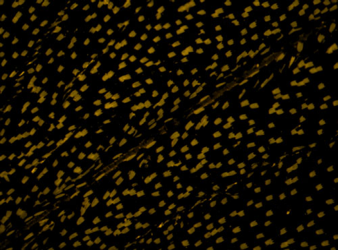 |
300--- The swelling torment: “That’s the awkward age.” It was no use, no use. The prize won 310--- Were cast as elves and fairies on the stage Another winter was scrape-scooped away.
|
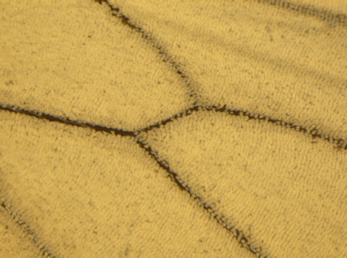 |
Let me retain for a moment that scene in all its trivial and fateful detail: hag Holmes writing out a receipt, scratching her head, pulling a drawer out of her desk, pouring change into my impatient palm, then neatly spreading a banknote over it with a bright “…and five!”; photographs of girl-children; some gaudy moth or butterfly, still alive, safety pinned to the wall (“nature study”); the framed diploma of the camp’s dietitian; my trembling hands; a card produced by efficient Holmes with a report of Dolly Haze’s behavior for July (“fair to good; keen on swimming and boating”); a sound of trees and birds, and my pounding heart…I was standing with my back to the open door, and then I felt the blood rush to my head as I heard her respiration and voice behind me. She arrived dragging and bumping her heavy suitcase. “Hi!” she said, and stood still, looking at me with sly, glad eyes, her soft lips parted in a slightly foolish but wonderfully endearing smile. Lolita |
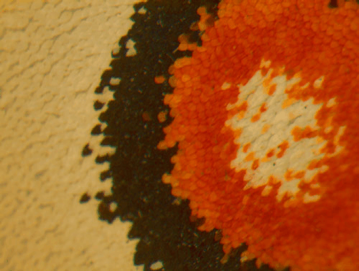 |
There are two especially vivid aspects of her that I would like to hold up simultaneously before my eyes in conclusion within me quite separately from the Polenka I associated with doorways and sunsets, as if I had glimpsed a nymphean incarnation of her pitiful beauty that were better left alone. One June day, the year when she and I were both thirteen, on the banks of Oredezh, I was engaged in collecting some so-called Parnassians – Parnassius mnemosyne, to be exact – strange butterflies of ancient lineage, with rustling, glazed, semitransparent wings and catkin-like flossy abdomens. My quest had led me into a dense undergrowth of milky-white racemosa and dark alder at the very edge of the cold, blue river, when suddenly there was an outburst of splashes and shouts, and form behind a fragrant bush, I caught sight of Polenka and three or four other naked children bathing from the ruins of an old bathhouse a few feet away. Wet, gasping, one nostril of her snub nose running, the ribs of her adolescent body arched under her pale, goose-pimpled skin, her calves flecked with black mud, a curved comb burning in her damp-darkened hair, she was scrambling away from the swish and clack of water-lily stems that a drum-bellied girl with a shaved head and a shamelessly excited stripling wearing around the loins a kind of string, locally used against the evil eye, were yanking out of the water and harrying her with; and for a second or two – before I crept away in a dismal haze of disgust and desire – I saw a strange Polenka shiver and squat on the boards of the half-broken wharf, covering her breasts against the east wind with her crossed arms, while the tip of her tongue she taunted her pursuers. The other picture refers to a Sunday at Christmastide in 1916. From the silent, show-blanked platform of the little station of Siverski on the Warsaw line (it was the nearest to our country place), I was watching a distant silvery grove as it changed to lead under the evening sky and waiting for it to emit the dull-violet smoke of the train that would take me back to St. Petersburg after a day of skiing. The smoke duly appeared and at the same moment, she and another girl walked past me, heavily kerchiefed, in huge felt boots and horrible, shapeless, long quilted jackets, with the stuffing showing at the torn spots of the coarse black cloth, and as she passed, Polenka, a bruise under her eye and a puffud-up lip (did her husband beat her on Saturdays?) remarked in wistful and melodious tones to nobody in particular: “A barchuk-to menya ne priznal [Look, the young master does not known me]-” and that was the only time I ever heard her speak.
Speak, memory |
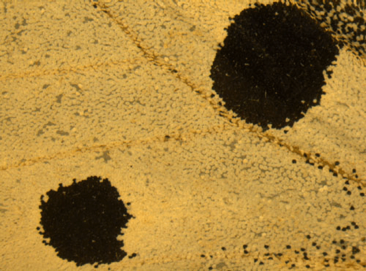 |
My wife and I have collected not only in Wyoming and Colorado, but in most of states, as well as in Canada. The list of localities visited between 1940 and 1960 would cover many pages. Each butterfly, killed by an expert nip of its thorax, is slipped immediately into a little glazed envelope, about thirty of which fit into one of the Band-Aid containers which represent, with the net, my only paraphernalia in the field. Captures can be kept, before being relaxed and set, for any number of years in those envelopes, if properly stored. The exact locality and date are written on every envelope besides being jotted down in one’s pocket diary. Though my captures are now in American museums, I have preserved hundreds of labels and notes. Here are just a few samples picked out at random:
Strong Opinions |
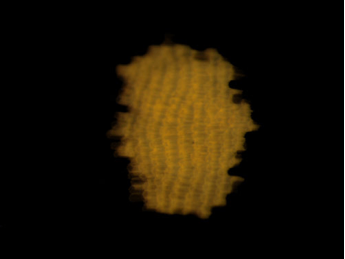 |
Our fondest dream,” she continued, “Krolik’s and my fondest dream, was to describe and depict the early stages, from ova to pupa, of all the known Fritillaries, Greater and Lesser, beginning with those of the New World. I would have been responsible for building an argynninarium (a pestproof breeding house,) with temperature patterns, and other refinements – such as background night smells and night – animal calls to create a natural atmosphere in certain difficult cases; - a caterpillar needs exquisite care! There are hundreds of species and good subspecies in both hemispheres but, I repeat, we’d begin with America. Live egg-laying females and live food plants, such as violets of numerous kinds, airmailed from everywhere, starting, for the heck of it, with arctic habitats – Lyaska, Le Bras d’Or, Victor Island. The magnanery would be also a violarium, full of fascinating flourishing plants, from the endiconensis race of the Northern Marsh Violet to the minute but magnificent Viola kroliki recently described by Professor Hall from Goodson Bay, I would contribute colored figures of all the instars, and line drawings of the perfect insect’s genitalia and other structures. It would be a wonderful work.” Ada |
 |
After a while I went on with my business, examining and roughly classifying the contents of the drawers. There were many letters. These I set aside to be gone through later. Newspaper cuttings in a gaudy book, an impossible butterfly on its cover. No, none of them were reviews of his own books: Sebastian was much too vain to collect them; nor would his sense of humour allow him to paste them in patiently when they did come his way. Still, as I say,there was an album with cuttings, all of them referring (as I found out later when perusing them at leisure) to incongruous or dream-absurd incidents which had occurred in the most trivial places and conditions. Mixed metaphors too, I perceived, met with his approval, as he probably considered them to belong to the same faintly nightmare category. Between some legal documents I found a slip of paper on which he had begun to write a story – there was only one sentence, stopping short but it gave me the opportunity of observing the queer way Sebastian had – in the process of writing – of not striking out the words which he had replaced by others, so that, for instance, the phrase I encountered ran thus: “As he a heavy A heavy sleeper, Roger Rogerson, old Rogerson bought old Rogers bought, so afraid Being a heavy sleeper, old Rogers was so afraid of missing tomorrows. He was a heavy sleeper. He was mortally afraid of missing tomorrow’s event glory early train glory so what he did was to buy and bring home in a to buy that evening and bring home not one but eight alarm clocks of different sizes and vigour of ticking nine eight alarm clocks of different sizes ticking which alarm clocks nine alarm clocks as a cat has nine which he placed which made his bedroom look rather like a ” I was sorry it stopped here. The Real Life of Sebastian Knight |
Works Cited
Notes
[1] Note [^]
[2] Note [^]
[3] Note [^]
[4] Note [^]
[5] Note [^]
[6] Note [^]
[7] Note [^]
[8] Note [^]
[9] Note [^]
[10] Note [^]
[11] Note [^]
[12] Note [^]
[13] Note [^]
[14] Note [^]
[15] Note [^]
[16] Note [^]
[17] Note [^]
[18] Note [^]
[19] Note [^]
[20] Note [^]
[21] Note [^]
[22] Note [^]
[23] Note [^]
[24] Note [^]
[25] Note [^]
[26] Note [^]
[27] Note [^]
[28] Note [^]
[29] Note [^]
[30] Note [^]
[31] Note [^]
[32] Note [^]
[33] Note [^]
[34] Note [^]
[35] Note [^]
[36] Note [^]
[37] Note [^]
[38] Note [^]
[39] Note [^]
[40] Note [^]
[41] Note [^]
[42] Note [^]
[43] Note [^]
[44] Note [^]
[45] Note [^]
[46] Note [^]
[47] Note [^]
[48] Note [^]
[49] Note [^]
[50] Note [^]
[51] Note [^]
[52] Note [^]
[53] Note [^]
[54] Note [^]
[55] Note [^]
[56] Note [^]
[57] Note [^]
[58] Note [^]
[59] Note [^]
[60] Note [^]
[61] Note [^]
[62] Note [^]
[63] Note [^]
[64] Note [^]
[65] Note [^]
[66] Note [^]
[67] Note [^]
[68] Note [^]
[69] Note [^]
[70] Note [^]
[71] Note [^]
[72] Note [^]
[73] Note [^]
[74] Note [^]
[75] Note [^]
[76] Note [^]
[77] Note [^]
[78] Note [^]
[79] Note [^]
[80] Note [^]
[81] Note [^]
[82] Note [^]
[83] Note [^]
[84] Note [^]
[85] Note [^]
[86] Note [^]
[87] Note [^]
[88] Note [^]
[89] Note [^]
[90] Note [^]
[91] Note [^]
[92] Note [^]
[93] Note [^]
[94] Note [^]
[95] Note [^]
[96] Note [^]
[97] Note [^]
[98] Note [^]
Return to Top»
